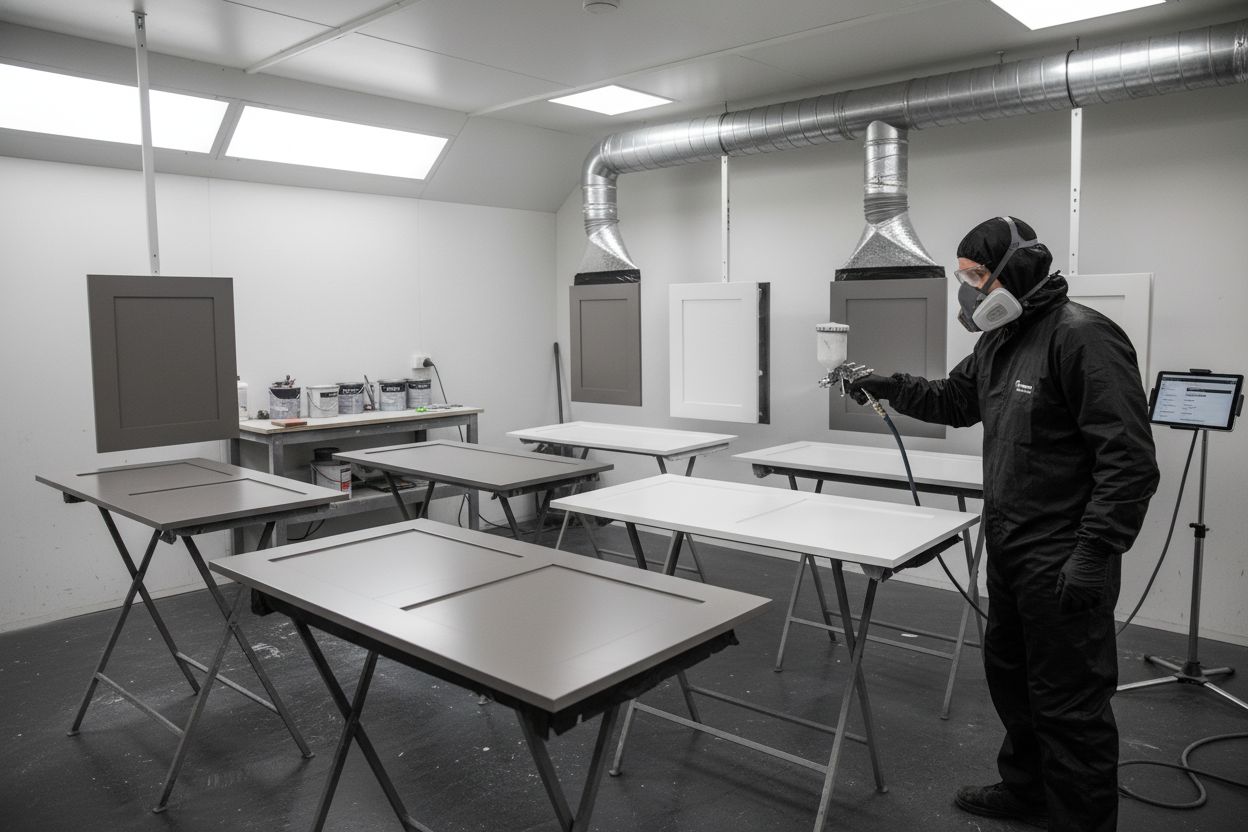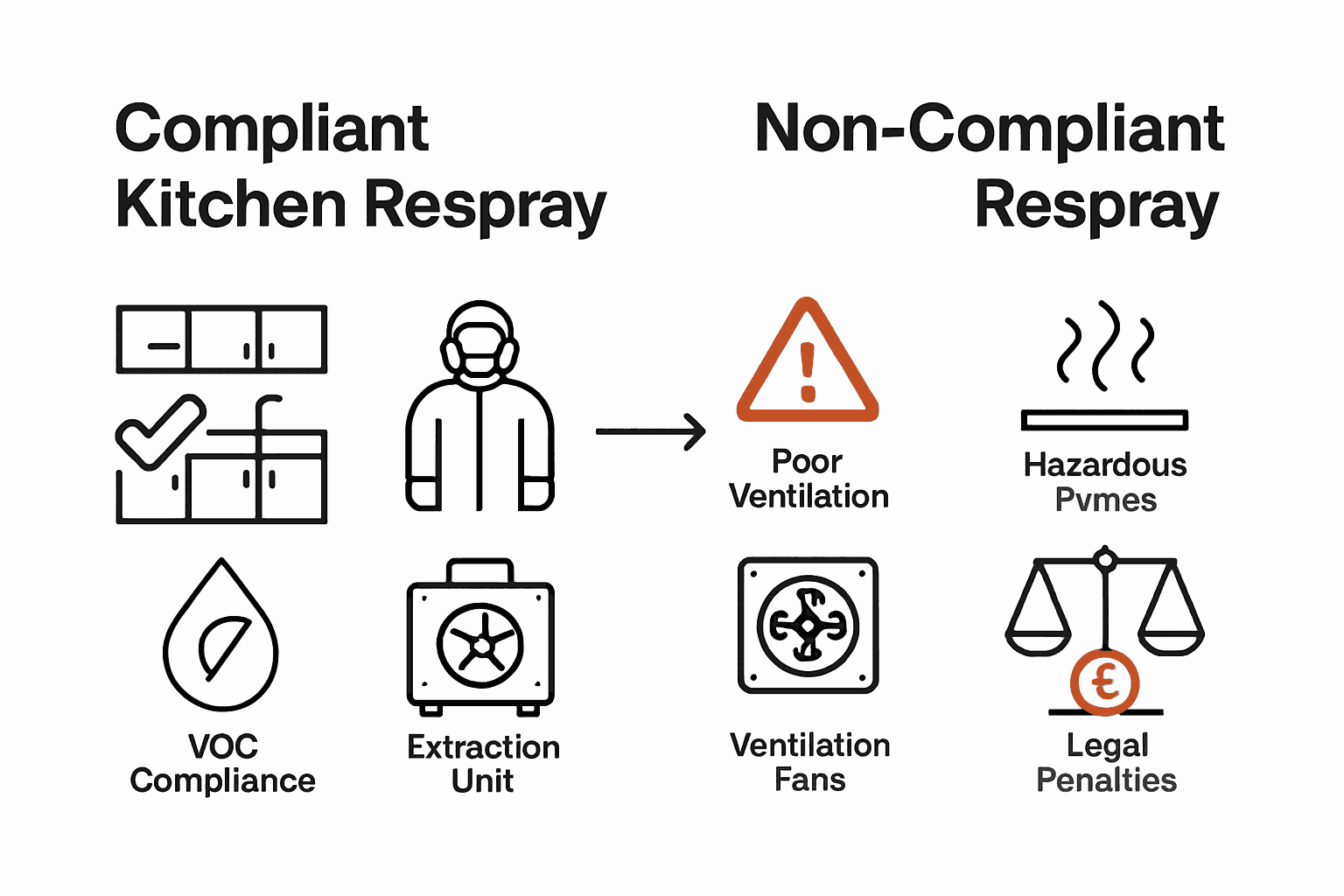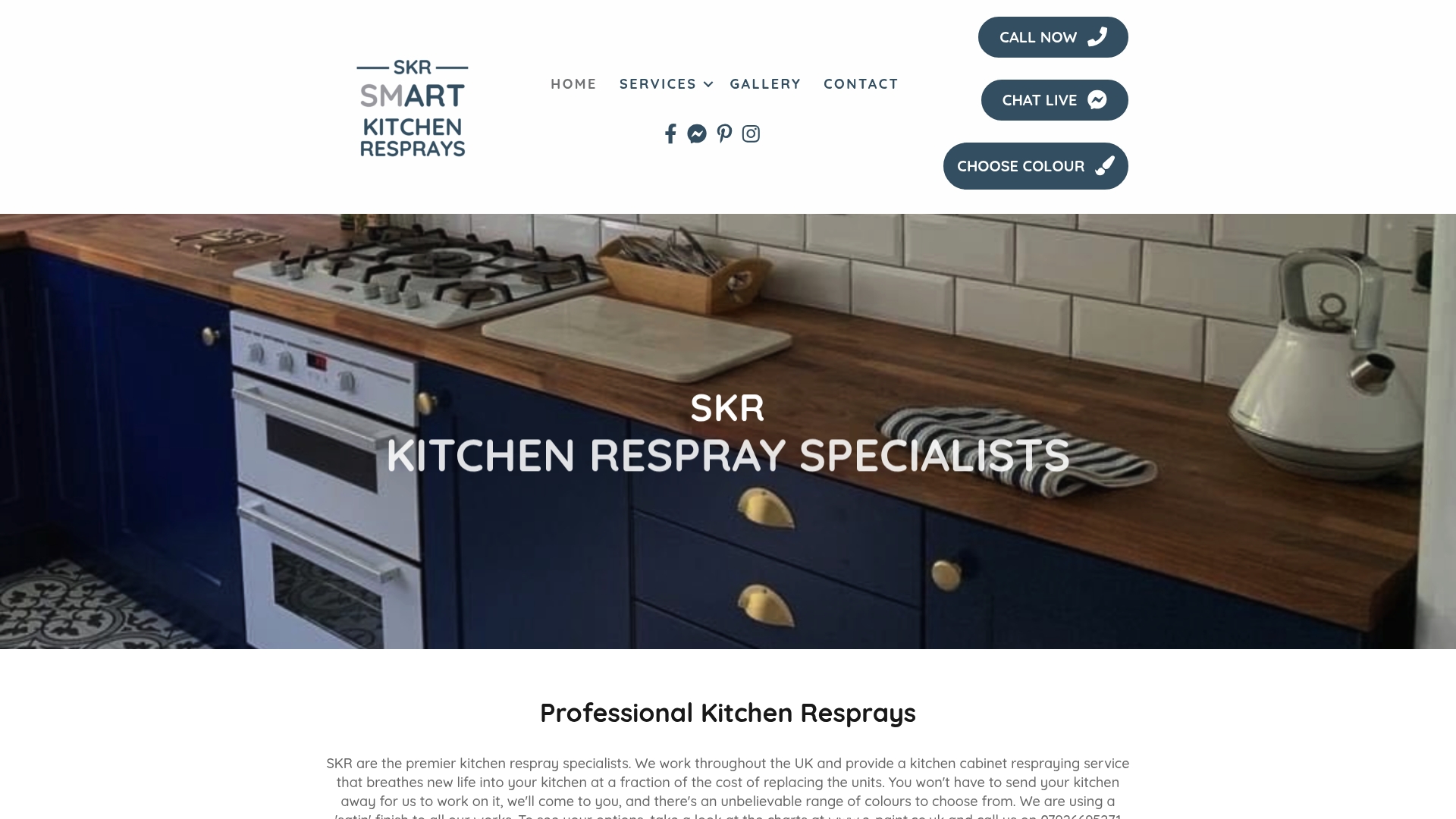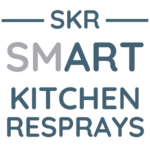Kitchen Respray Regulations UK: Complete Guide 2025
Did you know that fines for kitchen respray safety breaches in the UK can reach £50,000? Many people mistakenly believe that all kitchen repainting methods are safe, yet failing to follow the latest legal and environmental regulations can create serious health hazards and financial risks. With strict rules on paint types, ventilation, and professional skills, understanding the real facts behind kitchen resprays helps you avoid costly mistakes and ensures every renovation meets the highest standards.
Key Takeaways
| Point | Details |
|---|---|
| Understanding Kitchen Respray | Kitchen respray offers a cost-effective and efficient method of renovating kitchen surfaces without full replacement, but proper techniques are essential for safety and compliance. |
| Safety Compliance is Crucial | Homeowners and contractors must adhere to strict VOC regulations and safety standards to ensure health and environmental protection during respray projects. |
| Legal Responsibilities | Both contractors and homeowners share legal responsibilities, including verifying qualifications and ensuring safe practices to avoid liabilities. |
| Avoiding Common Pitfalls | Key compliance failures can lead to severe penalties; proactive management of safety protocols is essential to safeguard against legal and financial risks. |
Table of Contents
- Defining Kitchen Respray And Common Misconceptions
- Types Of Kitchen Resprays And Approved Methods
- Legal Regulations And UK Safety Standards
- Health, Safety, And Environmental Compliance
- Homeowner And Contractor Legal Responsibilities
- Common Pitfalls And How To Avoid Fines
Defining Kitchen Respray and Common Misconceptions
A kitchen respray represents a targeted renovation technique that involves professionally repainting existing kitchen surfaces without complete replacement. Unlike traditional kitchen refurbishment, this method allows homeowners to transform their kitchen’s appearance efficiently and cost-effectively.
Many homeowners harbour misconceptions about kitchen resprays, particularly regarding safety and regulatory compliance. Our comprehensive kitchen services guide reveals several critical insights about proper respray practices. According to research from industry experts, not all respray methods are equally safe or legal. For instance, using cellulose-based 2-pack paints indoors without proper ventilation can pose serious health risks due to dangerous isocyanate fumes.
Key misconceptions about kitchen resprays include:
- Believing all painting methods are equally safe
- Assuming high-VOC paints are acceptable for indoor use
- Thinking professional resprays don’t require specialized skills
In the United Kingdom, volatile organic compound (VOC) regulations are strict. According to halls decorators, matt interior paints must contain no more than 30 g/L, while glossy trim coatings can reach up to 100 g/L. This means homeowners must be cautious about paint selection, prioritizing water-based, low-VOC systems that meet current environmental and health standards.
Understanding these nuances ensures a safe, compliant, and visually stunning kitchen transformation that protects both your health and your investment.
Types of Kitchen Resprays and Approved Methods
Kitchen resprays encompass multiple sophisticated techniques, each designed to transform your existing kitchen surfaces without complete replacement. Our kitchen respray gallery showcases the remarkable transformations possible through professional methods.
According to research from Home Building experts, there are three primary approved respray methods in the UK kitchen renovation market:
- Hand-Spraying Lacquer Method: Focused application targeting kitchen fronts and edges only
- Full On-Site Enamel Spraying: Comprehensive approach involving detailed masking and preparation
- Selective Component Spraying: Detachable parts processed separately from fixed surfaces
The most technically advanced and recommended approach, as detailed by Kitchen Respraying specialists, involves a meticulous two-stage process.
First, removable components like doors and drawer fronts are carefully detached and transported to a professional workshop. Here, they undergo precise preparation and spraying. Simultaneously, fixed kitchen elements receive in-situ treatment using specialist polyurethane paints.
This method involves strategic layering techniques:
- Thorough surface preparation
- Application of specialist primer
- Precise paint application
- Multiple top-coat layers for optimal coverage
The result is a factory-finish appearance that dramatically transforms your kitchen’s aesthetic while maintaining structural integrity and longevity.

Here’s a comparison of the main kitchen respray methods and their key features:
| Respray Method | Coverage Area | Preparation Level | Typical Paint System |
|---|---|---|---|
| Hand-Spraying Lacquer | Fronts & edges only | Moderate | Lacquer-based finishes |
| Full On-Site Enamel Spraying | All surfaces (fixed & detachable) | High | Enamel, polyurethane systems |
| Selective Component Spraying | Removable parts (doors, drawers) | Very high (workspace & transport) | Workshop-grade, low-VOC paints |
Legal Regulations and UK Safety Standards
Kitchen respray projects in the UK are governed by stringent legal regulations designed to protect workers, homeowners, and the environment. Our professional services overview highlights the critical importance of understanding these comprehensive safety standards.
According to the Control of Substances Hazardous to Health (COSHH) Regulations 2002, contractors performing kitchen resprays must conduct thorough risk assessments and implement strict control measures for hazardous substances. This means every professional respray operation needs to:
- Identify potential chemical hazards
- Assess exposure risks
- Implement protective measures
- Monitor and record safety protocols
The Health and Safety at Work etc. Act 1974 provides the overarching legal framework for workplace safety. This legislation imposes critical responsibilities on contractors and employers, mandating that all painting operations prioritize worker and client safety. Potential consequences for non-compliance can include significant legal penalties and criminal sanctions enforced by the Health and Safety Executive (HSE).
Key legal considerations for kitchen respray projects include:
- Proper ventilation during painting
- Use of low-VOC and approved paint systems
- Personal protective equipment for workers
- Comprehensive risk documentation
By adhering to these rigorous standards, professional kitchen respray services ensure not just aesthetic transformation, but also absolute compliance with UK safety regulations.

Health, Safety, and Environmental Compliance
Kitchen respray projects require meticulous attention to health, safety, and environmental standards that go far beyond simple aesthetic considerations. Our comprehensive safety protocols ensure every project meets the highest regulatory benchmarks.
According to research from Halls Decorators, health and safety controls for spray painting encompass multiple critical domains. Professionals must implement:
- Strict adherence to volatile organic compound (VOC) limits
- Comprehensive respiratory protection protocols
- Robust ventilation systems
- Secure fire safety storage for flammable materials
The Environmental Protection Act 1990 introduces additional layers of complexity. This legislation classifies dust, fumes, and gases from premises as potential statutory nuisances. This means that inadequate extraction or improper fume control during a kitchen respray could potentially constitute a legal breach of environmental regulations.
Key environmental and safety compliance measures include:
- Using low-emission, environmentally friendly paint systems
- Installing professional-grade extraction equipment
- Implementing comprehensive personal protective gear
- Maintaining detailed operational documentation
By prioritizing these rigorous standards, professional kitchen respray services protect not just the immediate workspace, but also the broader environmental ecosystem, ensuring a safe, compliant, and responsible transformation process.
Homeowner and Contractor Legal Responsibilities
The legal landscape of kitchen respray projects involves nuanced responsibilities for both homeowners and contractors. Our professional service guidelines outline the critical legal obligations that ensure safe and compliant renovations.
According to the Health and Safety at Work etc. Act 1974, contractors bear significant legal responsibilities. These comprehensive obligations include:
- Providing safe working systems
- Delivering comprehensive staff training
- Ensuring continuous professional supervision
- Maintaining rigorous safety documentation
Interestingly, while cosmetic kitchen modifications typically do not require formal permits, homeowners are not entirely absolved of responsibility. By engaging unqualified workers or permitting unsafe working practices, property owners could potentially share legal liability for any incidents or breaches.
Key legal considerations for homeowners include:
- Verifying contractor qualifications
- Confirming comprehensive insurance coverage
- Understanding basic safety expectations
- Requesting detailed method statements
According to renovation experts, most kitchen resprays fall under cosmetic changes and generally do not trigger planning or building control requirements. However, this exemption applies strictly to surface-level modifications—any structural alterations or systemic changes would necessitate additional regulatory approvals.
Common Pitfalls and How to Avoid Fines
Kitchen respray projects can quickly become legal and financial nightmares if critical safety protocols are overlooked. Our expert compliance guide helps homeowners and contractors navigate potential regulatory landmines.
According to research from Halls Decorators, common compliance failures that trigger enforcement actions include:
- Skipping mandatory risk assessments
- Implementing poor workspace ventilation
- Neglecting proper respirator fit testing
- Failing to establish appropriate edge protection
Industrial painting experts from Oisin Butler warn that using cellulose 2-pack paints without comprehensive safety measures represents a significant legal and health risk. The recommended approach involves:
- Selecting low-VOC, water-based paint systems
- Ensuring thorough workspace ventilation
- Providing comprehensive personal protective equipment (PPE)
- Conducting detailed pre-work risk documentation
Fines for non-compliance can be substantial, potentially ranging from £500 to £50,000 depending on the severity of the breach. These penalties can be levied against both contractors and homeowners who fail to implement proper safety protocols or engage unqualified professionals. By understanding these risks and proactively managing compliance, you can protect yourself from potentially devastating financial and legal consequences.
Upgrade Your Kitchen Safely and Legally in 2025
Are you worried about meeting strict UK kitchen respray regulations or concerned about using unsafe materials in your home? With so many rules around VOC limits, ventilation requirements, and contractor qualifications, it is easy to feel uncertain about how to achieve a perfect finish without risking your health or finances. This guide to kitchen respray regulations has revealed how easily small oversights can lead to large fines or compromise your family’s safety. You deserve a beautiful kitchen that is also fully compliant with the latest 2025 standards.

Make the smart choice for your home and work only with proven professionals. Our team at SKR Specialists carries out every kitchen respray in-situ, following all UK regulations and safety protocols. Feel confident knowing our expertise eliminates risk and delivers a flawless, durable finish. Ready to protect your investment and avoid costly mistakes? Visit our kitchen respray service page to see what makes us different or head straight to our main site to book your consultation. Take control of your kitchen transformation now and enjoy compliance, quality, and peace of mind.
Frequently Asked Questions
What is a kitchen respray?
A kitchen respray is a renovation method that involves professionally repainting existing kitchen surfaces to transform their appearance without the need for complete replacement.
What are the safety regulations for kitchen resprays?
Kitchen resprays must comply with the Control of Substances Hazardous to Health (COSHH) Regulations, which require risk assessments and the implementation of safety measures for hazardous materials used in the process.
How can homeowners ensure compliance during a kitchen respray?
Homeowners can ensure compliance by verifying contractor qualifications, confirming insurance coverage, and understanding safety expectations, including requesting detailed method statements for the work being performed.
What are the common pitfalls to avoid when undertaking a kitchen respray?
Common pitfalls include skipping mandatory risk assessments, poor workspace ventilation, and neglecting proper training for workers, which can result in legal and financial repercussions.
